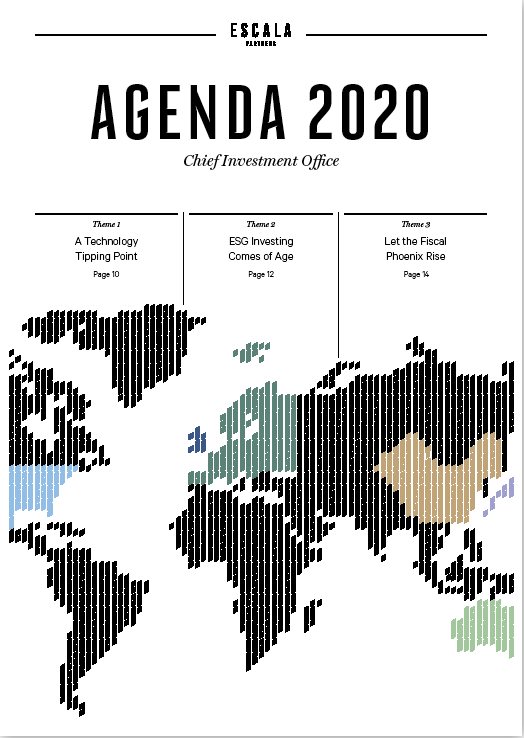-
Overview
Our base case scenario remains favourable toward global equities in 2020. Within the US, the Federal Reserve still has room to ease policy should it be required while outside of the US there is growing support for expansionary fiscal policy. While some markets on some measures do look overvalued, we believe a bottoming in the manufacturing cycle and an easing of trade tensions will support earnings.
Corporations have by far been the largest buyers of stocks since 2009.
— Goldman Sachs
The big drivers of global equity markets in 2019 are expected to continue in 2020. Central banks have learnt lessons from tightening too early and too quickly as was the case in the US in the final quarter of 2018. New monetary policy tools are being adopted to manage market liquidity conditions, as is the case with the Federal Reserve’s balance sheet management program. Corporate buyback activity may ease after the heady pace of 2018 and 2019 but with some level of uncertainty still clouding business investment, we expect it to remain a tailwind in 2020.
Inflation pressures that were previously dormant have started to stir somewhat but will not be enough to bring a tightening of monetary policy into play anytime soon. Deflation is feared more than inflation by central banks because of its impact on the effectiveness of monetary policy (as Sweden has realized with the negative interest rate “experiment”). The hurdle to raise rates, therefore, is far higher than it is to cut rates. While low interest expenses and higher inflation will support profit margins, the benefit will be partly offset by higher labour costs.
Within emerging markets, an expected easing of the US dollar will be favourable as will easier monetary policy by many emerging market central banks.
One of the biggest risks to our base case scenario is the potential for a rollback of the 2017 corporate tax cut in the US following the November presidential election. All of the current Democratic front-runners are in favour to varying degrees of a rollback. At the very least, the fear that this may happen will likely create market volatility this year.
Global Equity Market Performance since 2009

Source: Bloomberg
US S&P500 – Level and Drawdown

Source: Bloomberg
The US S&P500 rose by 184% over the past decade but there were six drawdowns of greater than 10% – 2010/11, 2015/16 and 2018/19.
Total Market Cap of Top 5 Companies in S&P500 (% total)

Source: Gavekal
There is a growing concentration risk in the US S&P 500 driven in part by the stellar performance of a handful of big stocks (Microsoft, Facebook, Apple, Amazon). The S&P500 is a market cap weighted index so when the big names perform well their weight in the index rises. The top five firms in the S&P500 make up 18% of the index, an historical high. Information Technology is the largest sector at 23% displacing Financials following the global financial crisis.
Export Exposure (Exports as % GDP)

Source: Bloomberg
Germany is among the most heavily exposed economies to global trade with 47% of its economy made up of exports.
European equities are likely to benefit from an easing of the US-China trade tension and with financials such a large share of the equity complex, a steepening of the yield curve will be supportive. A slight tailwind may also come from renewed ECB asset purchases and growing momentum toward expansionary fiscal policy.








